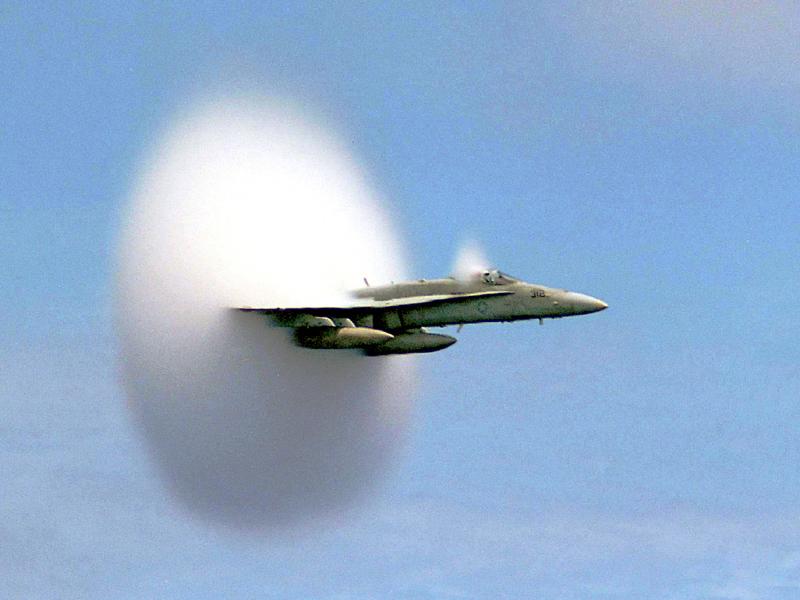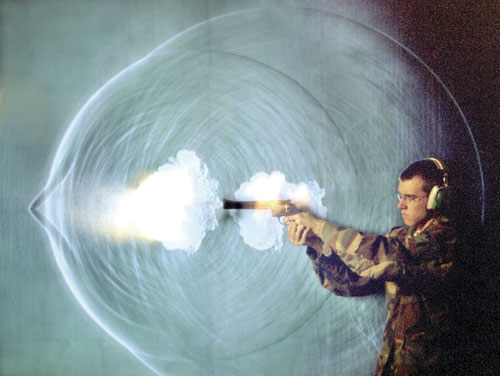 |
MA8103
Ikke-lineære partielle differensialligninger Kurset foreleses annethvert år. Neste gang: våren 2012 og 2014. |
|
[Norsk:] Kurset studerer en klasse av ikke-lineære partielle
differensialligninger som kalles hyperbolske konserveringslover.
Disse ligningene er fundamentale i forståelsen av kontinuerlige
mekaniske systemer, og kan beskrive f.eks. masse-, moment- eller
energibevaring i mekaniske systemer.
Eksempler på bruk av konserveringslover har du sett i kursene TMA4305 Partielle differensialligninger og TMA4195 Matematisk modellering samt i fysikkurs og fluidmekanikk. Ligningene har en rekke egenskaper som gjør numerisk beregning av løsningen vanskelig. Blant annet kan løsningen utvikle diskontinuiteter i endelig tid fra vilkårlig glatte initialdata. Mye forskning er blitt utført for å forstå egenskapene til disse ligningene fordi de er så viktige for anvendelsene. Eksempel på anvendelser inkluderer beregning av værmelding, flyt av olje i et oljereservoar, bølger som slår mot en strand, gassdynamikk. |
Kurset vil fokusere på grunnleggende egenskaper ved disse
ligningene og vil diskutere numeriske metoder for beregning av
løsning. Knut-Andreas Lie har laget en
web-side
med noen eksempler på anvendelser samt litt teori.
Det er relativt stor forskningsaktivitet innen dette feltet på Institutt for matematiske fag, og kurset vil egne seg godt som oppstart på en diplom- eller doktorgradsoppgave innen feltet. Kurset vil også være nyttig for viderekommende studenter fra andre institutter som trenger å lære mer om numeriske egenskaper ved ligningene. Kurset vil bli forelest av Helge Holden <holden@math.ntnu.no>. Pensumlitteratur blir Front Tracking for Hyperbolic Conservation Laws av H. Holden og N. H. Risebro. Boken fins som eBok. NTNU har derfor digital tilgang på boken, og en paperback-utgave selges for EUR 24.95 direkte fra Springer. |
|
[English:] In the course we study a class of nonlinear partial differential
equation called hyperbolic conservation laws. These equations are
fundamental in our understanding of continuum mechanical systems,
and can be used to describe mass, momentum and enery conservation in
mechanical systems.
Examples of the use of conservation laws you may have seen in TMA4305 Partial differential equations and TMA4195 Matematisk modellering as well as in courses in physics and fluid mechanics. The equations share many properties that make numerical computations difficult. The equations may, for instance, develop singularities in finite time from smooth initial data. These equations have been extensively studied due to their importance in applications. Examples of applications include weather forecasting, flow of oil in a petroleum reservoir, waves breaking at a shore, and in gas dynamics. |
In the course we will focus on fundamental properties of these
equations and will discuss numerical methods for the computation of solutions.
Knut-Andreas Lie has made a
web site
containing some examples of applications as well as some theory.
There is extensive research activity in this area at the Department, and the course is well suited as a start of project, a master thesis or a PhD study. The course is useful for students from other departments who need to study numerical methods applicable to these equations. The course will be given by Helge Holden <holden@math.ntnu.no>. The text book is Front Tracking for Hyperbolic Conservation Laws by H. Holden and N. H. Risebro. The book exists as an eBook, and NTNU has digital access to the book. A softcover copy of the book can be ordered directly from Springer for EUR 24.95. |

